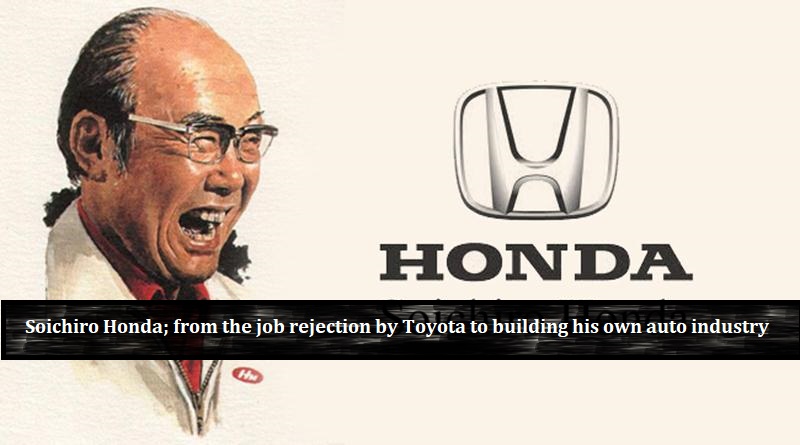Soichiro Honda was just a fifteen-year-old boy in 1992. Honda left home to take a job at Art Shokai, one of Tokyo’s first auto repair shops. Honda lacked a formal education so he had to start off by sweeping the floors until he developed a reputation of creative hardworker. One of his earliest achievements was his contribution to design one of the first racing cars ever made in Japan.
A few years later, Honda was put in charge of a new branch of Art Shokai. His branch performed very well and when he felt like he had earned his bosses’ respect, he decided to pitch them on an idea that had been brewing in his head. So there he was. He approached the bosses with a new way to design car pistons. His words however fell on deaf ears.
Honda was sure he was onto something. So he quit his job and started his one company. He named it Tokai Seiki. With the vision of producing pistons, he sunk everything he had into Tokai. He spent nights sleeping in his workshop until he felt the pistons were ready. He packed 30,000 of them into several trucks and traveled to Tokyo, where he presented them to the buyer at a new auto company called Toyota.
The buyer looked over the pistons then delivered some bad news. Honda’s design was substandard, and only 3 of 30,000 met Toyota’s standard. Toyota refused the shipment. The rejection should have hit Honda hard. After all, he had sunk all his money for this moment and they had just declared all his efforts worthless. The situation would have called Honda to close his shops and give up.
Instead of walking away, Honda decided to take a second look at what had gone wrong. IF his pistons were actually dead on arrival (DOA), he was going to perform his own autopsy on them before he ever threw in the towel. Fortunately for Honda, he was able to find out where he had screwed up. He had relied heavily on his firsthand experiences in his father’s shop and later at Art Shokai. He hadn’t spent enough time to pick up the engineering theory behind his designs. It was when Honda realized passion wouldn’t be enough. He needed education too.
Honda didn’t close his shops and he committed himself to learning both design and manufacturing. He spent the next several years travelling around Japan, taking engineering classes and visiting steel factories, trying to soak up as much knowledge as he could. AFter years of theory and observation, Honda felt ready to go back to his vision. This time he was able to overcome the design adn manufacturing issues that had tripped him up. He produced a batch of quality pistons and ultimately won the contract with Toyota.
His tough times however were still far from over. Near the end of World War II, one if his piston factories were designed in American bombing raid. A year later, another factory was destroyed by earthquake. Having two factories destroyed in two years would have been the final straw for most people. Not Honda. He wasn’t ready to call it a day. He get back up from that which is very hard to imagine for most people. He sold what was left of his company to Toyota for just 450,000 yen. With that cash, he set up a new company which he named the ‘Honda Technical Research Institute’ which eventually went on to be known as ‘Honda’.
Today, Honda is one of the most profitable car manufacturers of all time. Honda himself would become internationally known as the ‘Henry Ford of Japan’ and would be credited as one of the most innovative businessmen of the twenty-first century. When asked toward the end of his life what had been the most important lesson in his journey, Honda talked about the moment he had delivered the flawed pistons to Toyota. His failure somehow propelled him into a much more potent entrepreneur.
“Many people dream of success. To me, success can be achieved only through repeated failure and introspection.” Honda said. “In fact, success represents 1 percent of your work, which results only from 99 percent that is called failure.”
Soichiro Honda’s story connects with us all.
Many people have great ideas but only a few of us show the work ethic to actually follow through and put into motion. Every single one of us will make a mistake or experience some sort of failure on the way to bring our ideas to life. But it’s okay. In fact, if you look at the story of Honda, failure is a necessity for success.
Even the most driven and talented people feel like walking away when they’re presented with that inevitability. Don’t let yourself have that reaction. Approach failures the same way Honda did – as a springboard that can help you get things right the next time and be one step closer to your aspiration.

